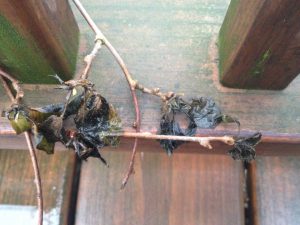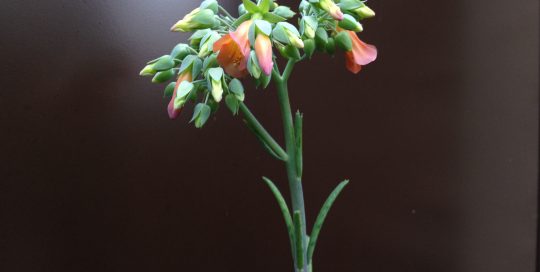Protecting plants during cold spring weather
Views: 5438

After a warm winter and early spring, people in southern Indiana were ready to get the gardening season started this year. Maybe a little too ready. Nature provided yet another lesson in patience when temperatures took a dive to below freezing. This is why protecting plants is so important!
With so many plants in bloom and starting to push out leaves, every gardener in the state was worried how everything would hold up in the cold conditions, myself included. Especially since I recently picked up a large order of trees, shrubs, and perennials that are sitting in my driveway until I can get them planted in the gardens of various clients. I knew it was risky to buy plants that had started leafing out, especially the perennials. But like I said, people were anxious to get going.
Protecting plants for late freeze
You can tell who the serious gardeners are in this kind of weather. Their yard will be filled with the lumpy outlines of plants draped with sheets. Following a “survival of the fittest” policy in my garden, I usually don’t fret much about covering plants when a late freeze threatens. However, there was no way I was going to let all those newly purchased plants freeze. I wonder if my business insurance would cover plant death via crazy spring weather? Anyways, I dug through my linen closet for the oldest and rattiest sheets. Then out into the yard I went to drape sheets over the small nursery in my driveway.
The largest plants were the hardest to cover. Especially an eight-foot tall flowering cherry and similarly sized serviceberry. After getting a stepladder and several more sheets from the closet, I deemed them sufficiently protected. Of course, at that point, almost every sheet we own was out in the yard. Even the good sheets! But I am happy to report that everything seems to have made it through.
How plants freeze
Plant leaves are susceptible to damage from freezing temperatures because their cells contain water. This expands when frozen, causing damage to the cell walls. Evergreen plants have a number of defense tactics that allow them to handle cold temperatures. This includes smaller leaf sizes (think conifers with needles), less stomata (the pores that allow the transfer of water and gases). Some release a hormone that withdraws water from the leaf itself. Others alter the shape of their leaves in winter to reduce the overall surface area (like the rolled leaves of rhododendron in winter).
Annuals, perennials, and deciduous trees and shrubs are much more susceptible to freeze damage. They are designed to drop their leaves or die back to the ground in winter. Annuals, tropical plants, and tender vegetables are the most likely to die from a freeze event. However, healthy trees, shrubs, and perennials that are hardy to your specific climate zone will more than likely bounce back and push out a new set of leaves. Depending on the timing, flowers may be lost for the year. (See picture for an example of freeze damage on my hardy kiwi vine.)
How to cover plants
When the cold threatens, small plants can be covered with an inverted flowerpot, bucket, two liter bottle or milk jug (with the top cut off), or other similar item. There are also many manufactured products specifically designed to protect tender plants.
For larger plants, a bedsheet, dropcloth, tablecloth, or other similar fabric will offer protection from the cold. It is best to place four stakes around the plant(s) to be protected and drape the fabric over the stakes so it isn’t in direct contact with the foliage and so that it hangs all the way to the ground.
That being said, I did not bother with the stakes and the wind blew holes into my sheet “tents”. But everything came out fine despite temperatures that dipped down to twenty-seven degrees Fahrenheit. Also, do not use plastic tarps unless there’s a layer of fabric under it. Plastic holds condensation and can actually cause plants to freeze instead of protecting them, especially if in direct contact with the plant.
Meet Abbi Hayes
Abbi's Recent Posts

Kalanchoe delagoensis: Mother of Millions







